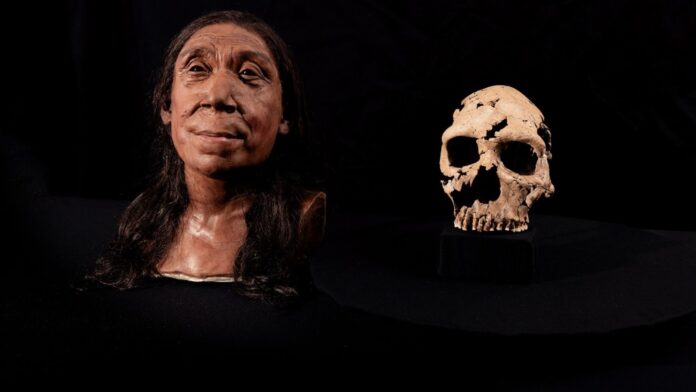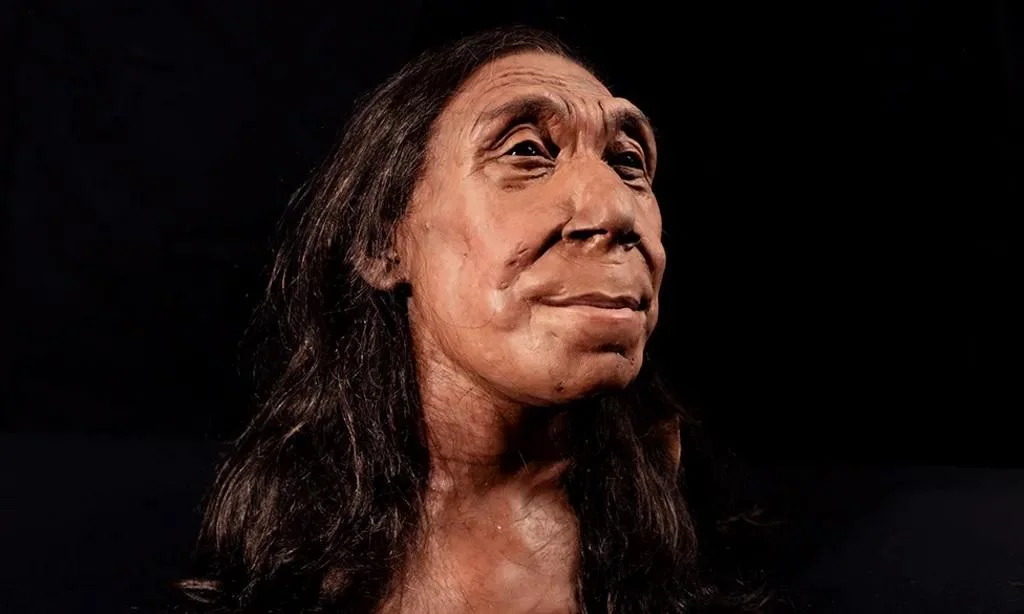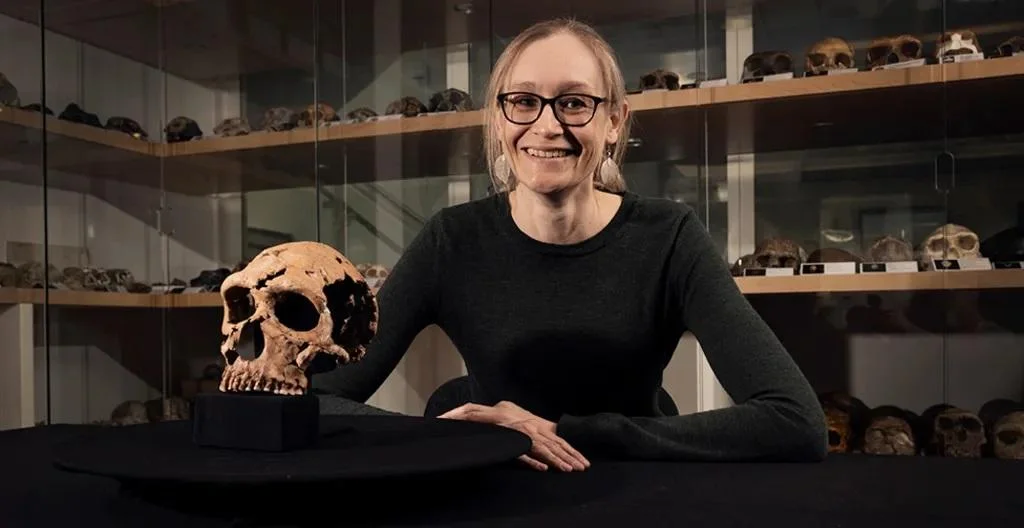In a groundbreaking achievement, archaeologists from the University of Cambridge and Liverpool John Moores University have successfully reconstructed the face of a Neanderthal woman who lived 75,000 years ago. This discovery challenges traditional views about the appearance and complexity of Neanderthals, offering new insights into the physical traits and sophistication of our ancient relatives.
The Discovery: A Shattered Skull Reconstructed
The remains of this Neanderthal woman, known as Shanidar Z after the cave in Iraqi Kurdistan where her skull was found in 2018, were discovered in a fragmented state. The skull had been crushed into approximately 200 pieces, likely due to a rockfall shortly after her death. Dr. Emma Pomeroy, a paleoanthropologist from the University of Cambridge, described the reconstruction as a “high-stakes 3D jigsaw puzzle,” given the challenging nature of piecing together such delicate remains.

The Reconstruction Process: Precision and Patience
Despite the significant challenges, the research team carefully reassembled the skull fragments, using a glue-like consolidant to reinforce the fragile bones. After strengthening the fragments, they were carefully wrapped in foil and transported for further analysis. This painstaking process culminated in the creation of a lifelike facial reconstruction, brought to life by renowned paleoartists Adrie and Alfons Kennis. The completed reconstruction revealed Shanidar Z’s face for the first time, offering the world a direct connection to this ancient individual.

Neanderthals and Their Relationship with Modern Humans
The facial reconstruction of Shanidar Z suggests that Neanderthals may have looked more similar to modern humans than previously believed. Although Neanderthals are often associated with distinct features such as prominent brow ridges and a lack of chins, Shanidar Z’s reconstructed face indicates that these differences may have been less pronounced in her lifetime. This discovery encourages a reevaluation of how we perceive Neanderthals—less as primitive, brutish beings and more as complex individuals with shared characteristics with Homo sapiens.

The Neanderthal-Homo sapiens Connection
This discovery also raises important questions about the extent of interbreeding between Neanderthals and Homo sapiens. Dr. Pomeroy points out that “almost everyone alive today still has Neanderthal DNA,” suggesting a much closer relationship between the two species than once thought. The genetic overlap further blurs the lines between Neanderthals and early Homo sapiens, highlighting the possibility of interaction and coexistence.

Implications for Our Understanding of Human Evolution
The reconstruction of Shanidar Z’s face, featured in the Netflix documentary Secrets of the Neanderthals, provides a pivotal moment in our understanding of human evolution. It offers a more nuanced view of Neanderthals, shedding light on their potential social behaviors and their relationship with Homo sapiens. As we continue to study these ancient humans, the line between our ancestors and Neanderthals becomes increasingly difficult to draw, suggesting that our evolutionary history is far more intertwined than previously imagined.

